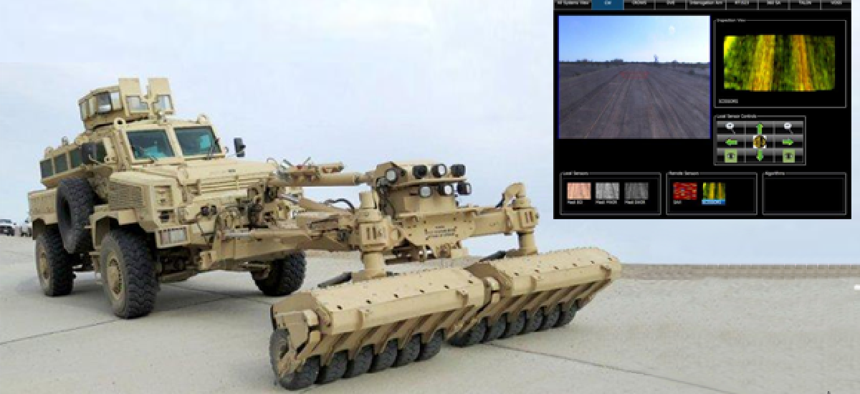Army consolidates sensing platforms into single display


Connecting state and local government leaders
Soldiers can now check a single touchscreen display to monitor their vehicle’s sensor, weapons and communications systems.
Until recently, soldiers working in Medium Mine Protected Vehicles (MMPV) to find explosive devices had to check separate displays that monitor imaging sensors, weapon systems and communications equipment. In an effort to decrease the information overload -- not to mention system size, weight and power consumption -- that comes with stove-piped systems, the Army consolidated the displays to a single touchscreen.
The system is based on a multisensor graphical user interface, which takes a wide field-of-view sensor and uses it to control a narrow field-of-view sensor, the Army said. This approach has significantly improved situational awareness for soldiers, as they now have several tools within their control at the tips of their fingers.
“If one soldier sees something on the monitor, other soldiers can switch to that sensor's view on their displays. In the past, only one soldier would be able to look at that sensor system's view. The system can also record the images and video captured while in route,” said lead engineer Sean Jellish, of the Army Communications-Electronics Research, Development and Engineering Center.
The new system will give every soldier the ability to toggle between all the different video feeds on that truck, which will increase the time spent on route clearance missions. "It's going to improve communication and it also starts to get rid of the multiple screens," said Brian Wilson, Systems Integration team leader for the Tank Automotive Research, Development and Engineering Center's Route Clearance Vehicle Team.
Not only does the new interface benefit soldiers on the field, but it saves the force money because it reduces the size, weight and power drain on the vehicle.
"It's where the truck should be going," Jellish said. "That's the game-changing aspect of it, it's getting rid of all this multitude of displays ... and just bringing it down to one display at each seat, but that display can control everything."




